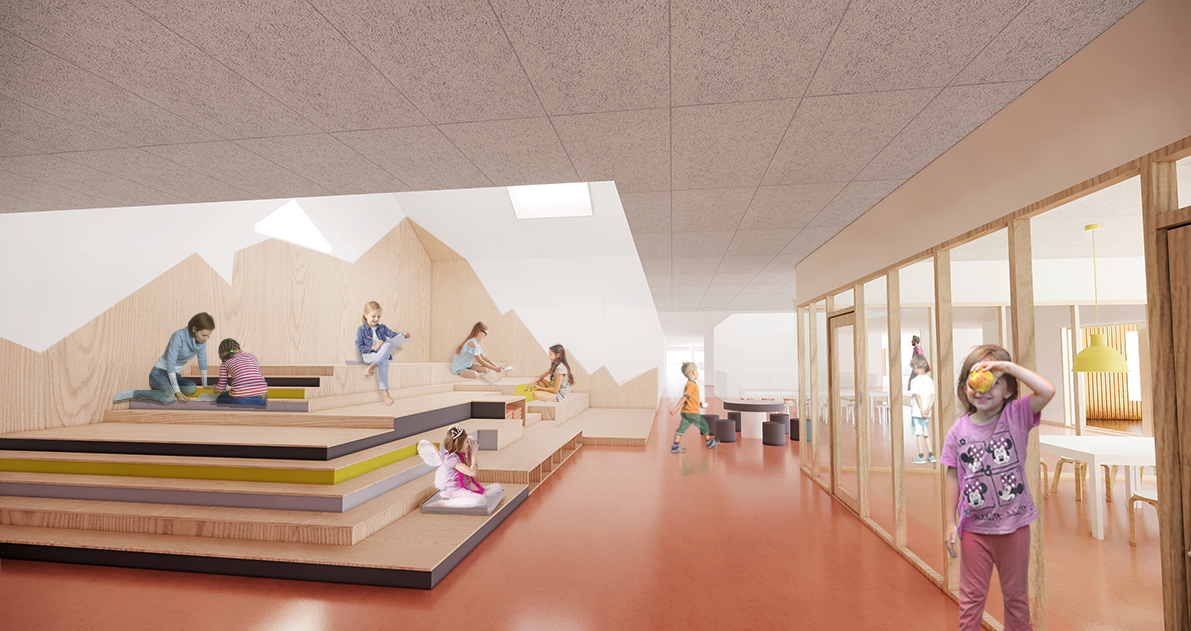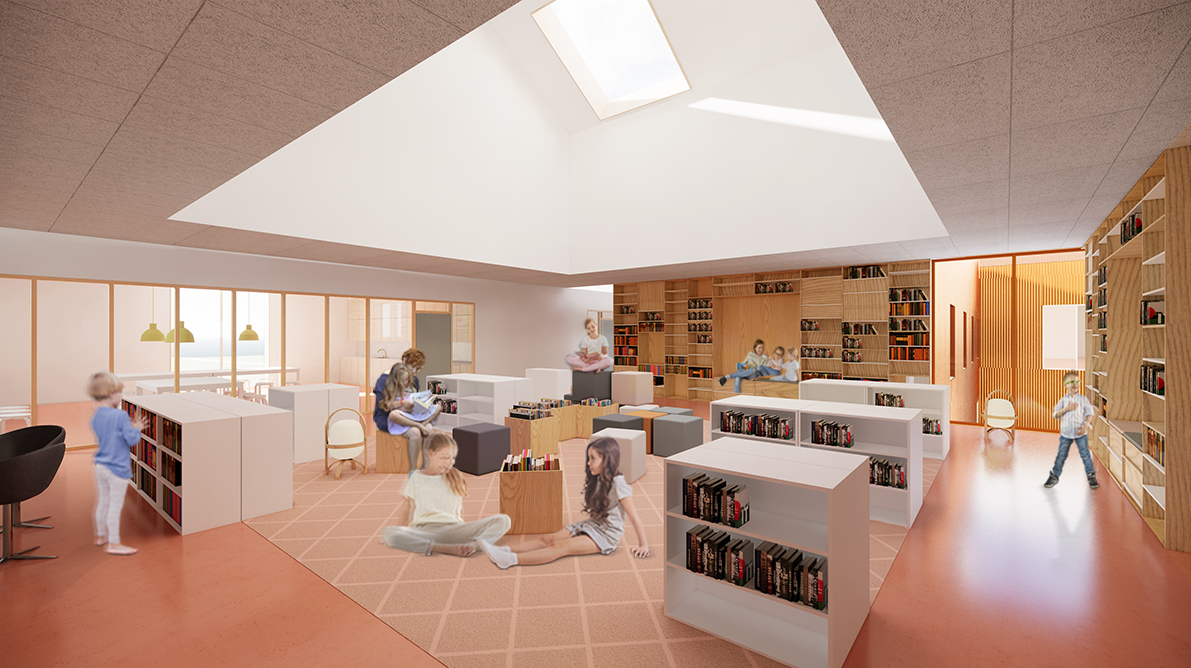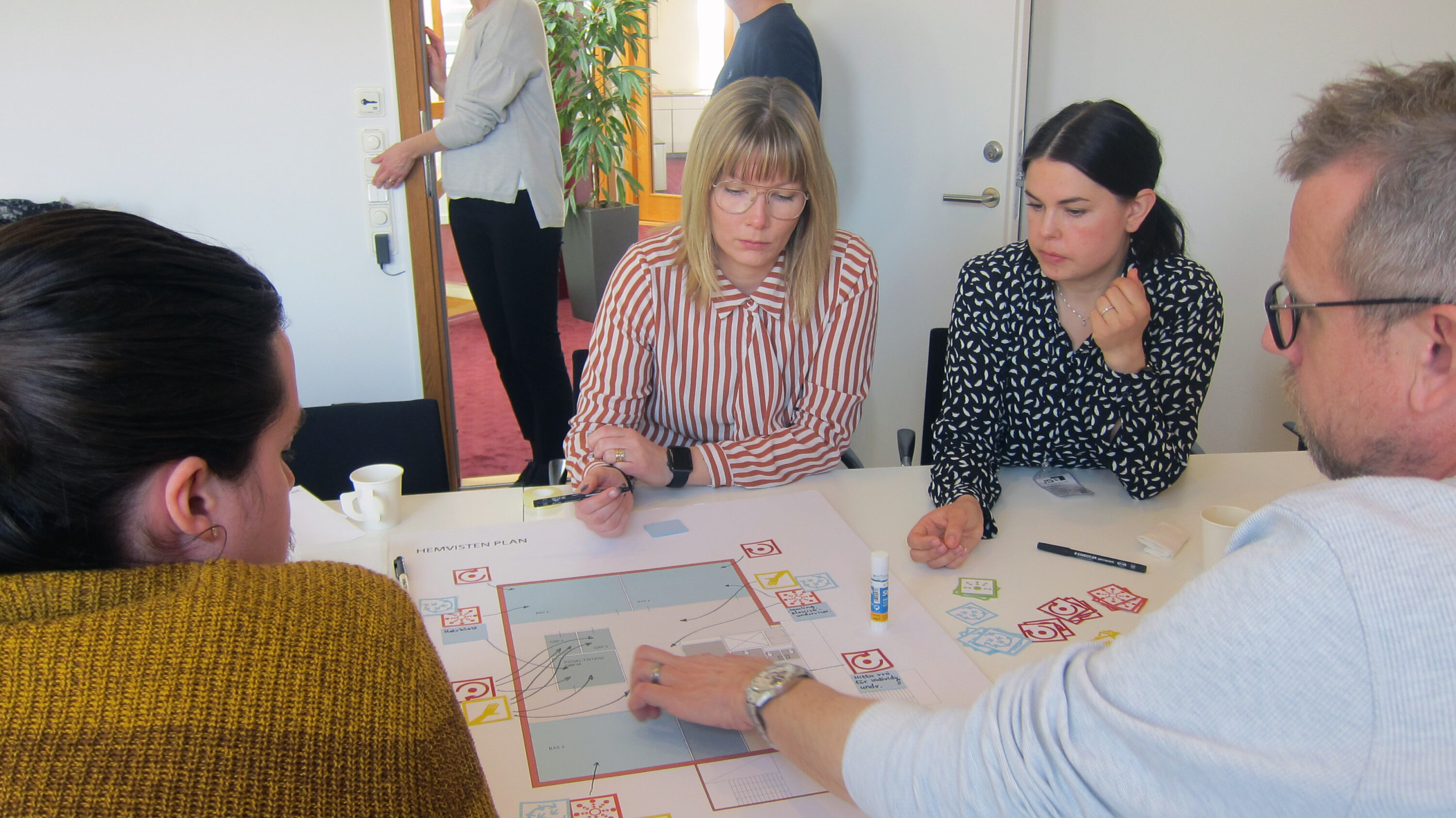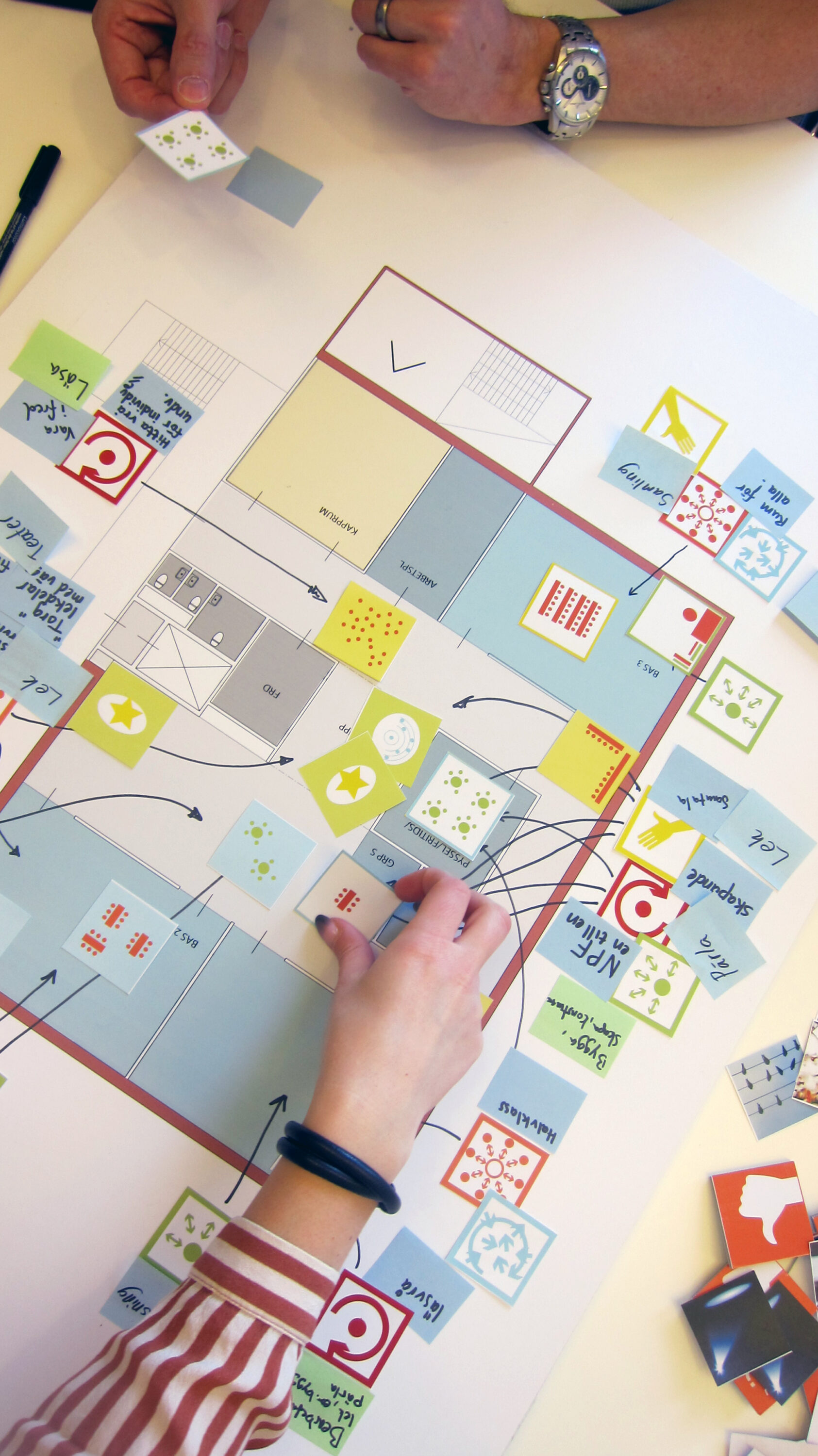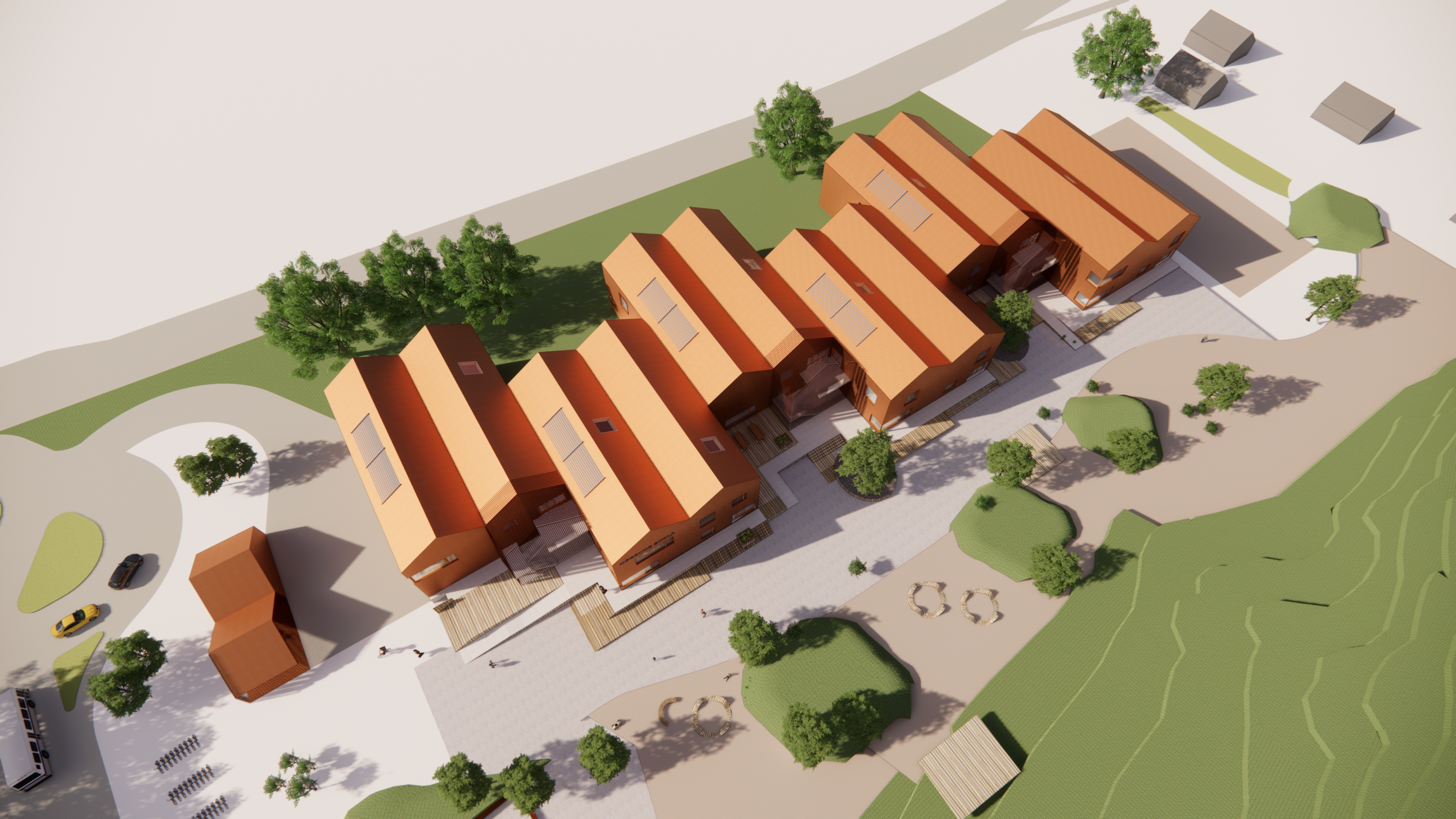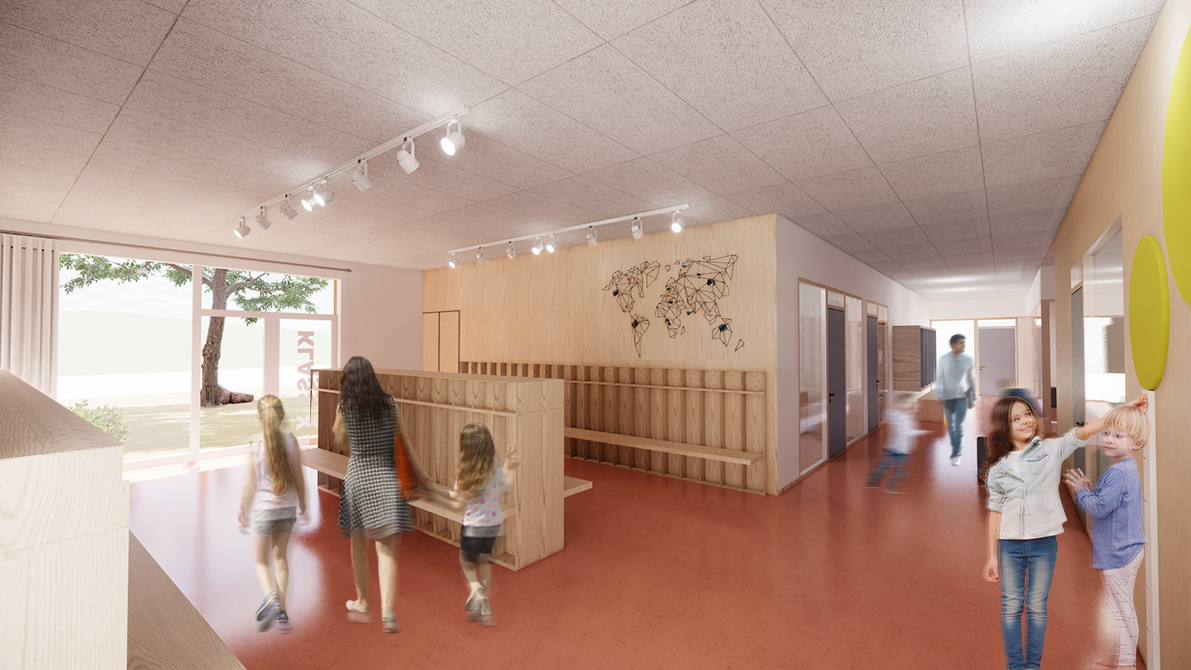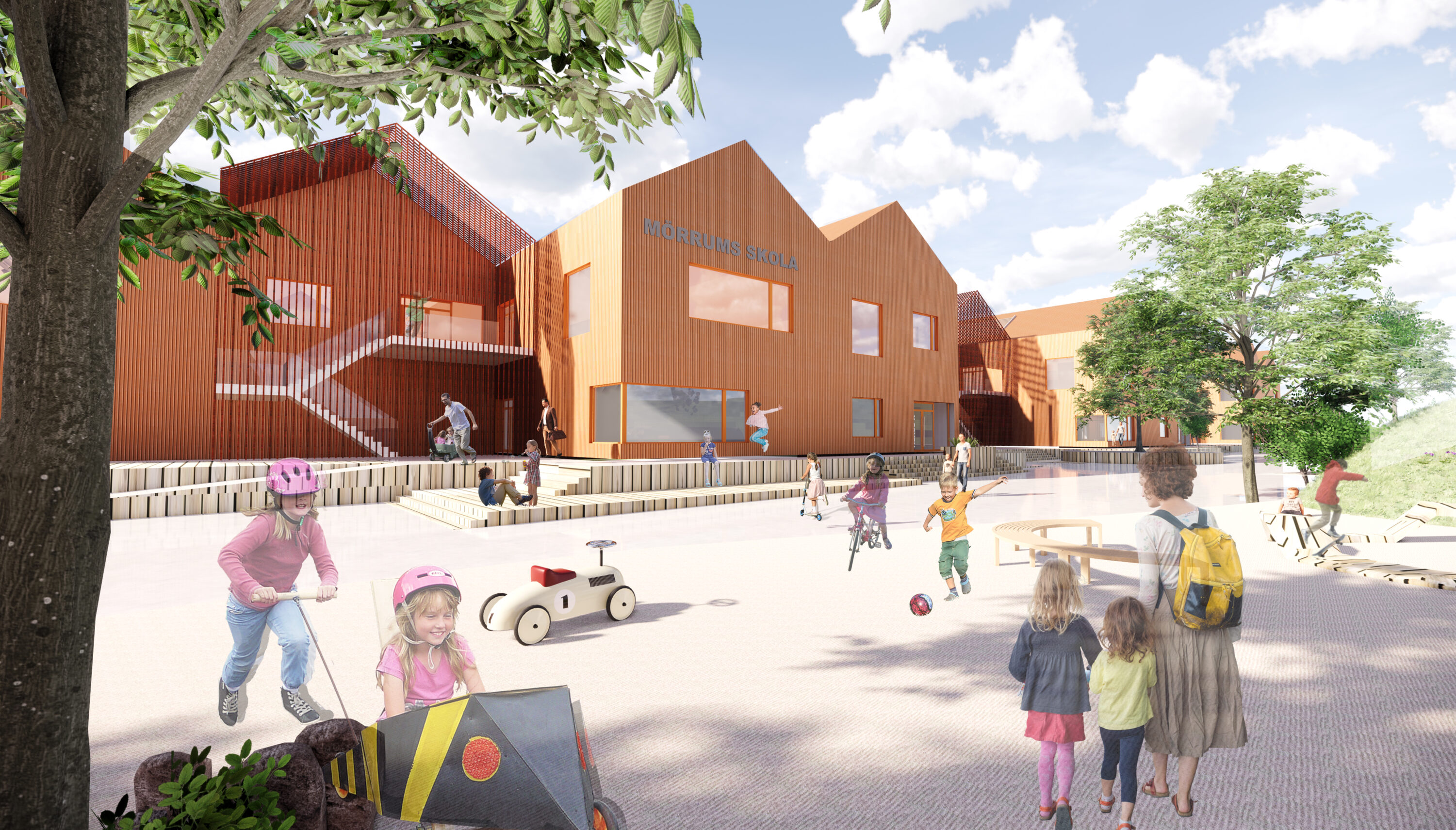2021-06-04
Maximum learning environment when FOJAB builds school
FOJAB has developed a new concept for designing learning environments. The first primary school to be built entirely according to this approach is Mörrum's new school with exciting architecture on a child's scale and learning environments literally in every corner.
The Knowledge Environments competence area at FOJAB works with schools and learning environments for children, young people and adults. Charlotte Kristensson is responsible for a team with both breadth and expertise that is able to take on projects from the very first phase all the way to the final design.
Participation and anchoring
Being involved early in the process is one of the success factors for building a really good school, says Charlotte Kristensson. In the case of Mörrum, she was involved from the very first idea stage. She investigated Karlshamn municipality's need for premises in a longer perspective, and could then conclude that a completely new school was needed in Mörrum that was better adapted to the business, instead of the many small ones that existed at the time.
FOJAB was awarded the contract and right from the start the team worked closely with politicians, officials, educators and the pupils themselves - another key factor. Building schools is a complex process with many stakeholders and FOJAB's school team works with various process tools for idea development, participation and anchoring.
- We put a lot of effort into developing a project vision that everyone can support. When we present the proposal, everyone is on board," explains Charlotte.
No corridors
FOJAB anchors the design in research on learning and development. In Mörrum, workshops were held with the teachers, where, among other things, knowledge about safe corners was captured. It is about the fact that corners are often appreciated areas in the school, they feel safe, but if they are disturbed by doors where people run in and out, they function less well as a learning environment.
- Architecture matters. The physical built environment is an educational tool and a catalyst for learning and development.
The FOJAB team strives to maximize what Charlotte calls the learning environment factor, making the best use of square meters. "Building houses is expensive, so it's important to minimize any space used for non-essentials.
- Mörrum's new school is the first school we have built completely without corridors! There is a minimum of communication areas, almost everything is a learning environment.
Adapt the space to the activity
The issue of space is not straightforward. A school has to satisfy many needs and often the organization has a long wish list of what the new building should contain. It is not always easy to draw the line, to say what is necessary and what is not. But then FOJAB's architects can help. FOJAB has developed a tool for calculating the need for premises based on the business needs.
- It is a way to optimize the space based on the curriculum and the calculation is usually welcomed by the client.
Safe havens and spatial diversity
Mörrum's new school is a primary school for grades F-6, with room for 550 students. One challenge was that the school should not feel too big. The solution was to break up the large building body into six smaller building volumes with several entrances and dormitories. From the dormitories, you move on to the common areas - in the sock drawer because everything is connected.
- Schools today are often built with a single large main entrance. This makes it a long way for students to get to their homes, and they have to go in and out several times a day. Our slogan was 'When you open the door, you are there'. This provides an immediate proximity between outside and inside, and a much safer environment.
In the traditional school, all rooms are the same size, but in Mörrum there is a wide variety that better meets today's educational needs.
Flexible use of premises is always an important parameter for FOJAB and an important aspect of sustainability. A facility that can be used by several different activities at different times is both economically and climatically smart. In Mörrum, the common premises, such as workshops, kitchen lab and canteen, are located so that they can easily be rented out to associations and other municipal activities in Mörrum.
- Knowledge environments are important meeting places that also contribute to the social sustainability of society.
Joy of movement the starting point
FOJAB is not only designing the school building in Mörrum but is also responsible for the interior design and outdoor environment. The children have drawn, built models and made films that have served as a basis for the landscape architects' work on the schoolyard. Joy of movement is the starting point and is based on research showing that learning is supported by movement. The movement factor, a tool developed by FOJAB together with the Swedish Sports Confederation, is used in the design.
- We always think about the complete learning environment. Mörrum's school is a fine example of the end result when we can work according to all the steps of the process. With cooperation and participation from start to finish, with collaborative solutions for increased sustainability and an experiential architecture that contributes to the children's learning. This will be the jewel in the crown," says Charlotte Kristensson.
Would you like to know more? Feel free to contact
Charlotte Kristensson
charlotte.kristensson@fojab.se, tel +46 727 18 88 44
